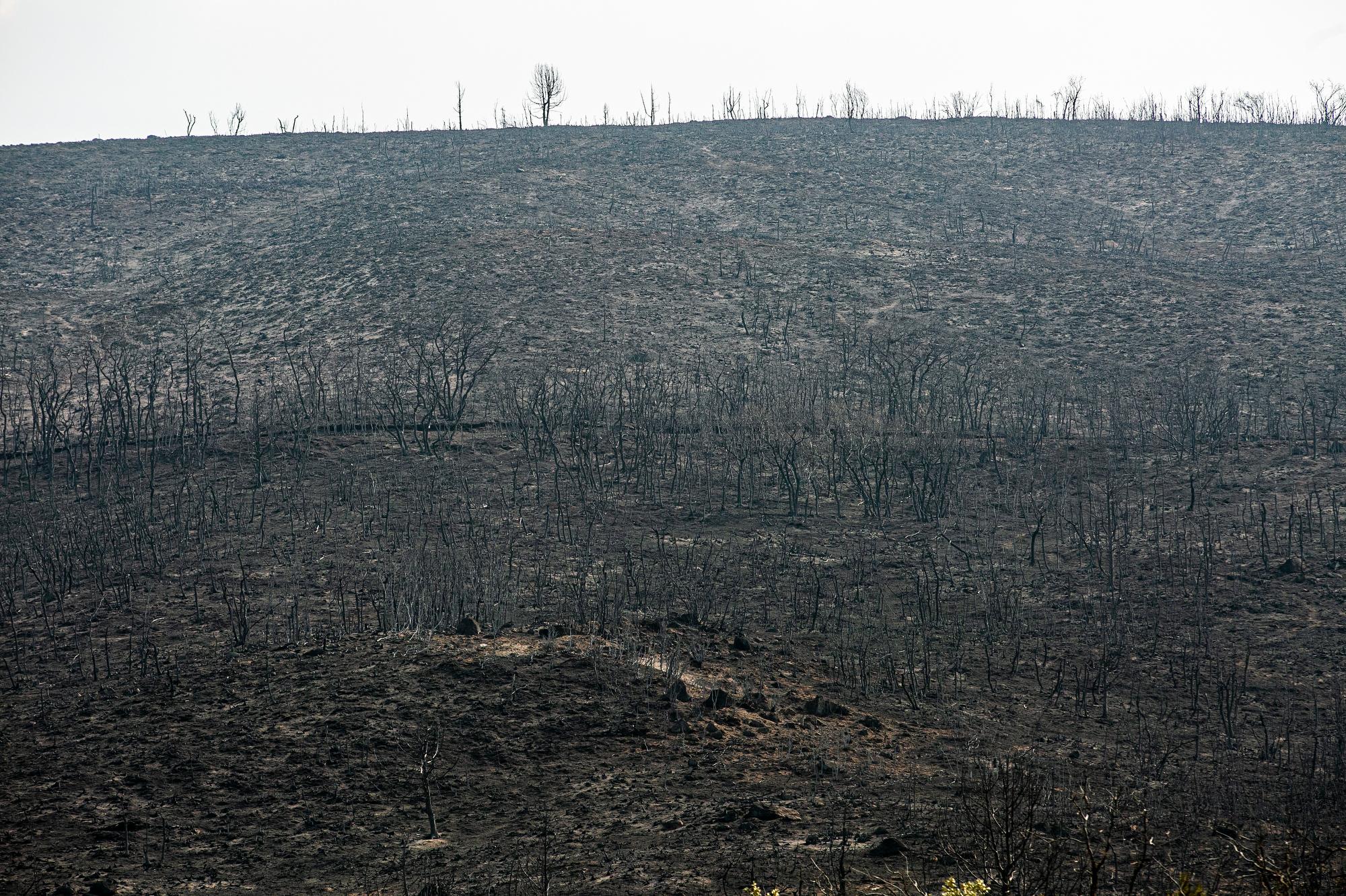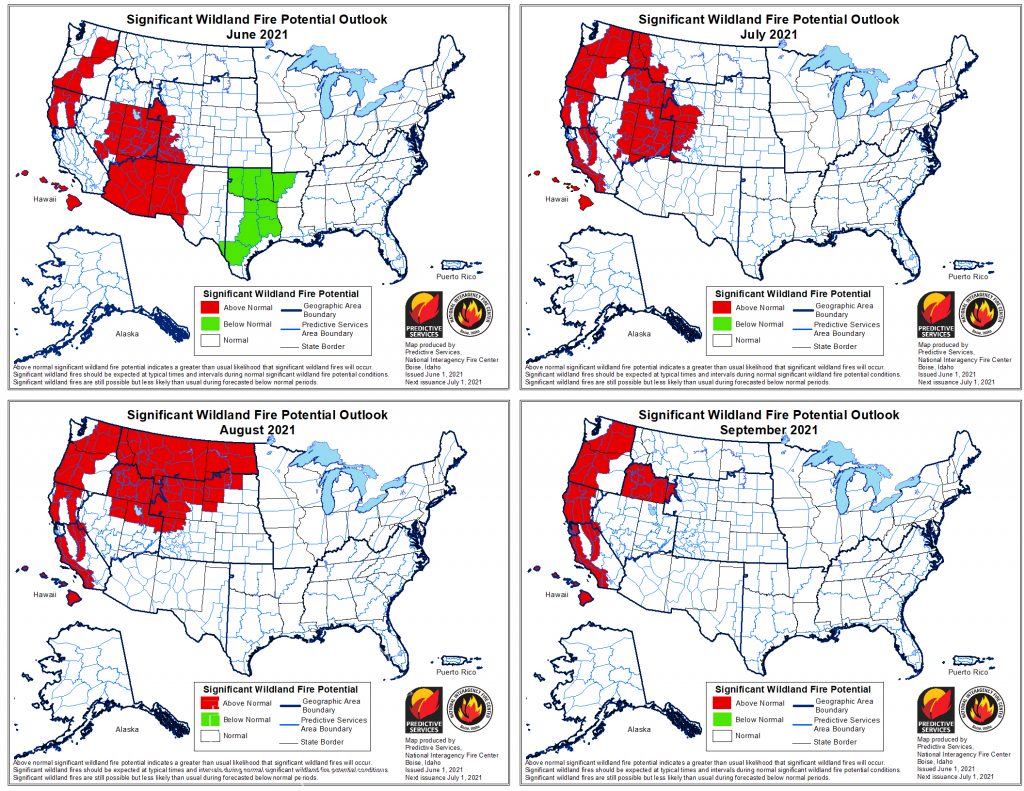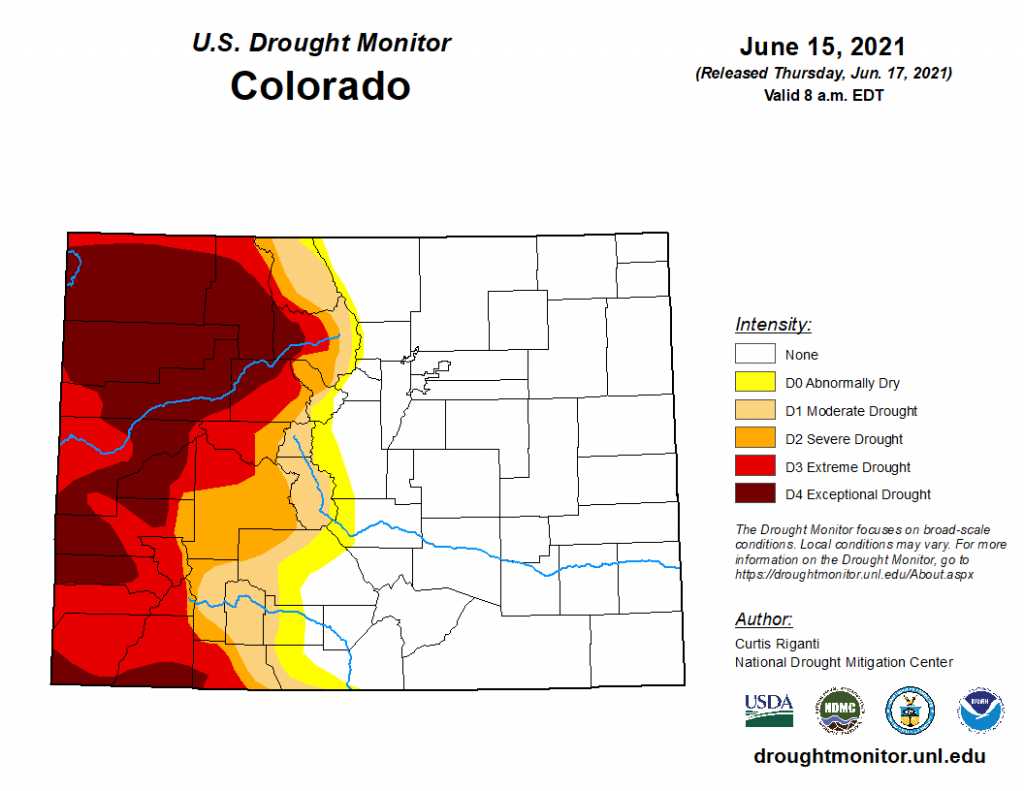
Parts of Colorado’s West Slope face an above-normal risk for significant wildfire activity through August, a four-month wildfire forecast from the National Interagency Fire Center suggests.
During a presentation on the report, Gina Palma, a fire meteorologist with the Great Basin Coordination Center for the United States Department of Agriculture, said the unprecedented heat wave that just swept across the western United States rapidly worsened fuel conditions.

“That is quickly pushing many areas into an early start to the fire season that we typically do not see,” Palma said.
About 30 percent of Colorado is in extreme or exceptional drought — all west of the Continental Divide. Palma said this region is experiencing fire and fuel conditions that wouldn’t typically be seen until July and August.

Palma said vegetation like sagebrush and timber is drier than normal, making the wildfire fuel easier to burn. Large fires tend to grow on their own when fuels are this dry, Palma said, even without high heat or strong winds. Another impact of the drought is a widespread report of die-off in Western Colorado’s pinyon and juniper forests, Palma said. Those dead trees increase available fuel for wildfires.
The forecast shows that the risk for wildfire will return to normal levels for all of the Western Slope by September due to seasonal monsoon rains.
“We are expecting it to develop this year, which has been a change in the past years where we’ve had very poor monsoon development,” Palma said.
If the monsoon does not develop as expected, Palmer said the areas of above-normal fire potential will remain.









